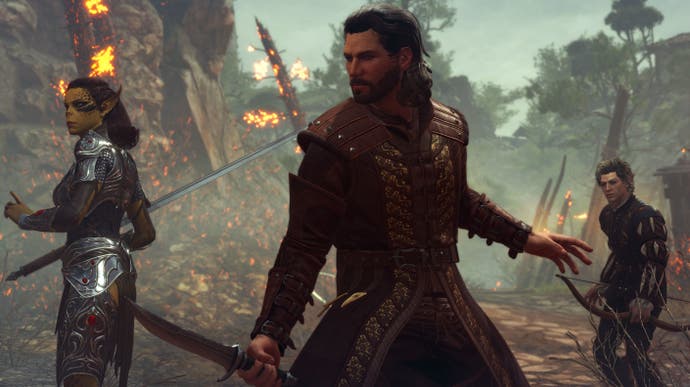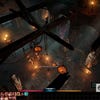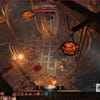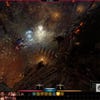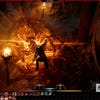Larian's gorgeous Baldur's Gate 3 looks to be a game of groundbreaking systemic depth
Dungeon master.
It's early days for Baldur's Gate 3. An end of year release window seems to have leaked but there's "no exact date" for when it's coming out, according to developer-publisher Larian Studios, of Divinity: Original Sin and Original Sin 2 fame. And when it does come out - simultaneously on Google Stadia and Steam - it'll be in early access first. Understandably, early access can seem a bit icky to some, but Larian's argument for it seems fair enough: the game needs en-masse testing from its own audience if it's ever going to come together, and having now seen a marathon, over three hours long presentation of live gameplay, I can see why. Baldur's Gate 3 is a game with an extraordinary level of systemic depth and remarkable complexity. Across the board it's a game that'll need time. Time to polish, time to balance, and quite a bit of time from the player, I'd imagine, to really get anywhere close to understanding and mastering its systems. But from what was shown of the game and what Larian has told us in our Baldur's Gate 3 interview, it'll be worth the wait - and then some.
Our presentation opened with the same stupidly pretty CGI intro you'll have seen from the Baldur's Gate 3 panel going on at PAX, before a quick run through the character selector, a skip over the "secret" tutorial, a couple of hours of early game party-gathering and dungeon crawling, and then a closer look at a massive, later-game dungeon that showed all the flashy systems off with a little more depth. To start at the beginning though, on the most fundamental level, Baldur's Gate 3 is a darker, more viscerally detailed story than what you might have been used to from Larian.

The story begins with a bunch of Mind Flayers - angry, definitely-not-Cthulhu squid people with some pretty gnarly magic powers - flying around in a jumbo squid mothership called a Nautiloid. On board, you and a handful of others are held prisoner and infected with what could more or less be described as brain worms: a "tadpole", with lots of teeth, bores its way under your eyelid, through the back of your eye and into your brain. The Nautiloid crashes, you wash up on a spot of beach, and your mission is to find someone who can get that tadpole out of your head before it pops through your skull and rather gruesomely turns you into a Mind Flayer yourself. As I said: a bit darker than Divinity.
The tadpole does come with a special power though, which acts as one of Baldur's Gate 3's central gimmicks: you can sort of "mind meld" with anyone else who has one, and as well as the "origin characters", plenty of characters around the world will turn out to have a pet tadpole of their own. (The character creator itself appears just as detailed as Original Sin 1 and 2. Origin characters and their special, fully-voiced, cutscened and backstoried facets return of course, and in the creator you can choose race and subrace, background, class, subclass, and just about everything else conceivable).
On the surface, much of the time the tadpole mind-melding boils down to the odd special dialogue option with fellow brain wormers, acting as sort of shortcuts through tricky conversations, in the vein of special origin character options that are seemingly always positive. But that's a superficial explanation, really. The tadpoles are one part of a much wider set of systems - or perhaps more accurately, a wider web of sets of systems - that all play off one another with Larian's now-typical panache. To get to the heart of how this little story gimmick plays into the wider game you need to go deeper, into what Baldur's Gate 3 really is and how it really works.
What it is is complex. Start by thinking of a typical CRPG like Divinity: Original Sin, where the background numbers power the visible numbers, like your characters stats, which dictate your ability to navigate certain situations like persuading someone to let you out of prison through dialogue, or smash through a door with magic. All of the people-persuading and the door-smashing intertwines with a set of rules, which in the Original Sin games is built around surfaces and statuses. So, if the floor's on fire and you throw some water on it, or cast a water-based spell at it, the fire and water turn to a lingering cloud of steam. Standing in the steam might do damage to you or cure you of an ailment or whatever else, depending on all the moving parts like what race you are and what innate traits you have, and so on.
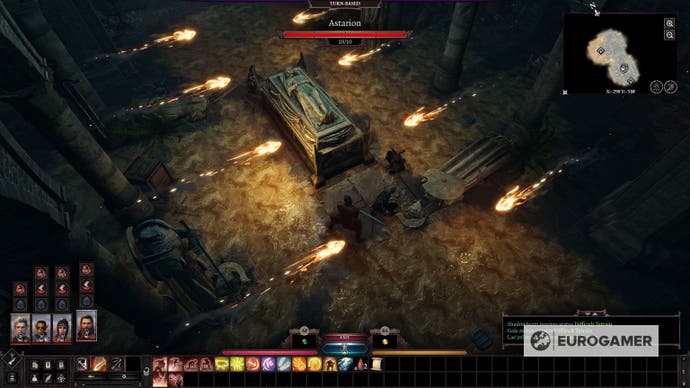
Now, intertwine those rules with the rules of Dungeons and Dragons, as they were back in the original Baldur's Gate and Baldur's Gate 2. You can dip weapons in flaming sconces to light them on fire, you can throw anything you have on your person (more on that in a bit) you can stack objects to create stairs (more on that too), and, above all, everything is powered by a D20 dice roll. Sometimes that's behind the scenes, little formulae whirring away in the background as you walk around the world passing and failing perception checks for little hidden levers or pressure plates; or spotting or failing to spot facial twitches that reveal anxiety or anger in conversation, all the working-out of which viewable in a little bottom-right tooltip that lifts the mathematical bonnet. Most of the time, however, that dice roll is quite explicit. You roll for initiative on encountering enemies, according to things like who has the high ground or the element of surprise. You roll for explicit attempts to do things like persuade or intimidate in conversation, as well as the passive rolls in the background that might just pop something up. You roll, three times, to see just how "dead" you are when you're downed: fail three and you're dead for good (if you haven't already been picked off, or if you haven't got a resurrection scroll on some other party member to recover).
Stir all that together and what do you have? Chaos. Baldur's Gate 3 is a molotov cocktail of a game, every action's consequences shattering outwards, spreading and spurting across seemingly the entire length of a run through it. Take the experience we had, with Larian's founder, Swen Vincke, taking control of the origin character Astarion, who's a vampire spawn (like a vampire only he has a boss, who's more of a proper vampire). Astarion, being a vampire, regularly has the option to just go ahead and feast on the neck of whoever he's talking to. Most of the time that's not a very good idea and there's not a very good chance it'll work, but if you want to try it, you can. To demonstrate this, Swen opted to chow down on a sleeping party member at your camp (you can make camp in most places to heal up, restore ability uses and so on). He needed to role an 18 or higher, out of 20, to succeed - the purposes of the demonstration was to show it was pretty tough - and of course he rolls a natural 20 and now we're noshing on our mate, left the next day with an especially upbeat Asatarion and a very "tired" Cleric.
But that, really, is only the surface of what you can do - and more than that just how much the inherent chance-based systems of D&D affect an already complicated mesh of things you can do in games like Divinity. At the very beginning of our first playthrough, at what would be the first little tester battle after the tutorial, Vincke missed a shot that had a 90 percent chance to hit, scored a critical miss on what would've been a one-hit-kill spell, and got killed in one shot by a critical hit from the enemy. So we roll back through all the intro chat for another go and: two hits, two kills, enemies done and dealt with before they could even move.
In another skirmish, this time our party up to three members, against about four bandit grunts, Vincke showed off the game's new stealth system, sneaking Astarion up behind an archer that would have had an incredible high-ground advantage to punt him off the ledge before the battle begins. Again though: bad luck. Misses and critical hits in all the wrong directions mean that, even including the tactical ledge-punt, the battle goes horrifically and we're left kiting the bandits out into the woods towards some neutral fighters nearby, in the hope they'll join in. A magical, disembodied hand was used to try and nudge someone off another ledge but missed. Potions were used up, abilities spent, and Astarion left to throw his boots at an enemy for a bit of chip damage - and hits. Half-triggering the nearby group of neutrals changes how we meet them later on, forcing us to fight the last one instead of triggering a cutscene. Some party members are lost for good. Some secrets, hidden in plain sight just off the beaten path, through some bushes and under some noticeably odd-looking rock, go undiscovered. The point above all is luck can swing a playthrough to the wildest extremes of success and failure. Enjoying that will come down to how happy you are to improvise, make do and fly by the seat of your throwable boots. Or how regularly you like to save.
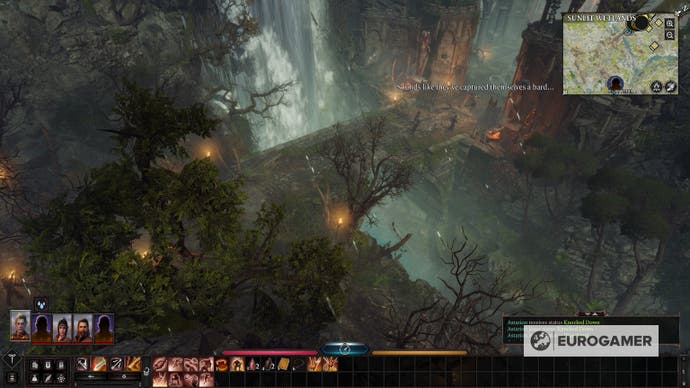
There's another rather ingenious twist to all this, too, which that bandit skirmish hinted at. You can split your party and put any of them into turn-based mode at one point, while the others can simultaneously walk around in "real time". Baldur's Gate 3 is technically a turn-based game. The combat is turn-based, dialogue is turn-based, so to speak, and the environmental puzzles, of which there seem to be many, are solved in that manner too. But you move around the world in real time and this system, really, is a bit of a hybrid. In our playthrough Astarion wandered down into a dungeon - previously guarded by those bandits - on his own, and worked his way through most of it solo while the others were left presumably frozen up on the surface. Then we got stuck in some combat after some more bad luck, including a key that failed to open a chest it should've (and an attempt to smash the chest open that just... smashed the chest entirely), and had to bring in some help. So back up on the surface another party member smashed through the ground they were standing on to drop down, conveniently, into a room next door to this tricky battle - a spot of movie magic, I'd suspect: "oh no it's going wrong in exactly the right place, we definitely didn't plan for this as a way to show you how the hybrid system works!" - and so we turn a 2v1 into a 2v2, that additional party member automatically entering turn-based mode when he reached the "battle area".
Later in that dungeon we got stuck in a particularly grisly grease and fire-based trap (with a dash of raising the undead thrown in for good measure) and again Vincke demonstrated the power of lateral thinking by juggling real-time and turn-based movement to bring other party members to join and work around the hazards. Often that actually descends into a sort of calculated gaming of the game itself, and fascinatingly that seems to be where the game really finds its groove. Baldur's Gate 3's magic is in its malleability, but also in your malleability, as a player that has to react and adapt. You are supposed to try and break it. You're supposed to build a staircase of crates the other side of a door to an enemy and keep popping it open and closed to confuse them and juggle the aggro. You're supposed to see what happens when you throw this at that, cast this on them, say this to her or climb up onto that.

Which brings us to the climbing, and perhaps the biggest shift in how CRPG regulars will need to work their way through Baldur's Gate 3: its fascinating use of verticality. Your characters can now all jump quite a significant way - success depending on, you guessed it, character stats and semi-hidden D20s - and so even in towns and hubs you can work your way onto a building and down into it through the roof, bypassing locked doors or barred gates. In the later-game dungeon we played, you're tasked with tackling a tough boss surrounded by enemies. He's got a tadpole himself, but try to use that in dialogue and, unless you're lucky with the dice, it'll probably fail, leaving him angry and you exposed to a pretty nasty ambush. So what do you do?
Well, if you picked up some interesting-looking barrels several hours ago, you could use them to create sort of veil of darkness to sneak up behind him. Things - obviously - went wrong when this was attempted in our playthrough so again, improvisation. The stealthiest character was sent up to the rafters - this must be the third or fourth level up of at least a four or five level dungeon - and around beside the boss. A very risky jump is attempted, to right behind him, and somehow pulled off. An explosive barrel is placed, and the our rogue Astarion works his way out up the other side, knocking down the escape ladder with him. Then the conversation, which our other party members had seemingly been paused in, half-way through, this entire time, can play out. Mind-meld fails, boss gets angry - planted explosive barrel gets detonated! - and he goes flying across the room and through a hole, down three floors to some giant spiders in the basement. Carnage - but all predicated on a decision to pick up some barrels hours earlier, your own ingenuity to think of it, your knowledge of how the systems themselves can be gamed, and the luck to pull it off.
Baldur's Gate 3 Preview Gallery
That, as a whole, is Baldur's Gate 3 in action. A ridiculous, divine physical comedy, despite the grimdark lore and the toothy brain worms that go in through the eye. It's full of lore for Dungeons and Dragons nerds, full of immeasurable replayability, full of numbers if you want to dive into min-maxed granularity or sillyness if you want to just bowl through for a laugh. There are caveats. Despite the far more lavish spread of cutscenes and motion capture, that was all very early and clunky for now, although openly acknowledged as such, being "pre-alpha". There'll be a huge weight on the shoulders of the tutorial, which by necessity may well drag, and you may well need a good twenty hour playthrough to actually know how to play the game the way it's meant to be enjoyed. Stirred together though, all those complexities put into motion, Baldur's Gate 3 is quite something to watch. The hope is it won't be too chaotic, too systemic, too terrifyingly complex for a normal person like me to work it out for myself.
This article is based on a press trip to Paris. Larian Studios covered travel and accommodation costs.
